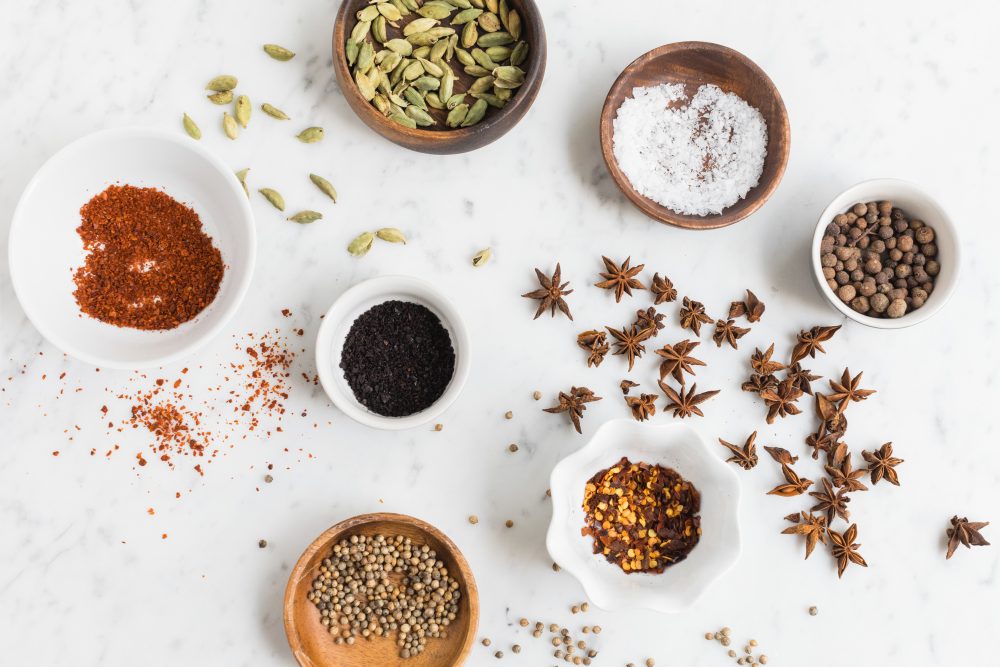Fleur de sel, Maldon, Himalayan pink—today’s supermarket shelves are increasingly filled with a wide range of salt options. This got us wondering: Is it really possible to taste differences in varieties of salt?
We suspected that when cooking with salt, the answer would be no. But finishing salts—coarse or flaked salts sprinkled over a dish as it is served—had potential.
To sort it out, we asked Mark Bitterman, owner of Bitterman Salt Co., the best way to taste salt. He says three things determine the flavor of a salt: its crystal structure (size and shape), its moisture content and its mineral profile (the trace minerals from where the salt was harvested).
We focused our testing on five common finishing salts: black lava, red alaea, French gray, Himalayan pink and common kosher. We first tasted a few grains of each variety on their own; we were impressed by how pronounced the differences were—from the alaea’s earthy, red-oxide-rich flavor to the oceanic brininess of the gray salt, to the pungency of the Himalayan pink salt. But since we know that the size and texture of the salt can influence our perception of taste, we wanted to see if we could isolate any flavors the minerality might be contributing.
Based on a suggestion by Bitterman, we dissolved each variety in two liquids—water and cream—then tasted.
In each case, we found that any distinctive flavors the salts might have had were lost, even the markedly sulfurous flavor of the black lava salt.
The verdict? The best bet for tasting differences between salt varieties is to use them only as a finishing sprinkle, and only on dishes where they won’t immediately dissolve into the other ingredients.
For more, see our handy chart for measuring different kinds of salt and discover the power of herb-flavored salts.
Join the conversation on Facebook, Twitter, Instagram and Pinterest.
Stay up to date on free recipes, new radio episodes, classes, events and more with our newsletter. Sign up here.




